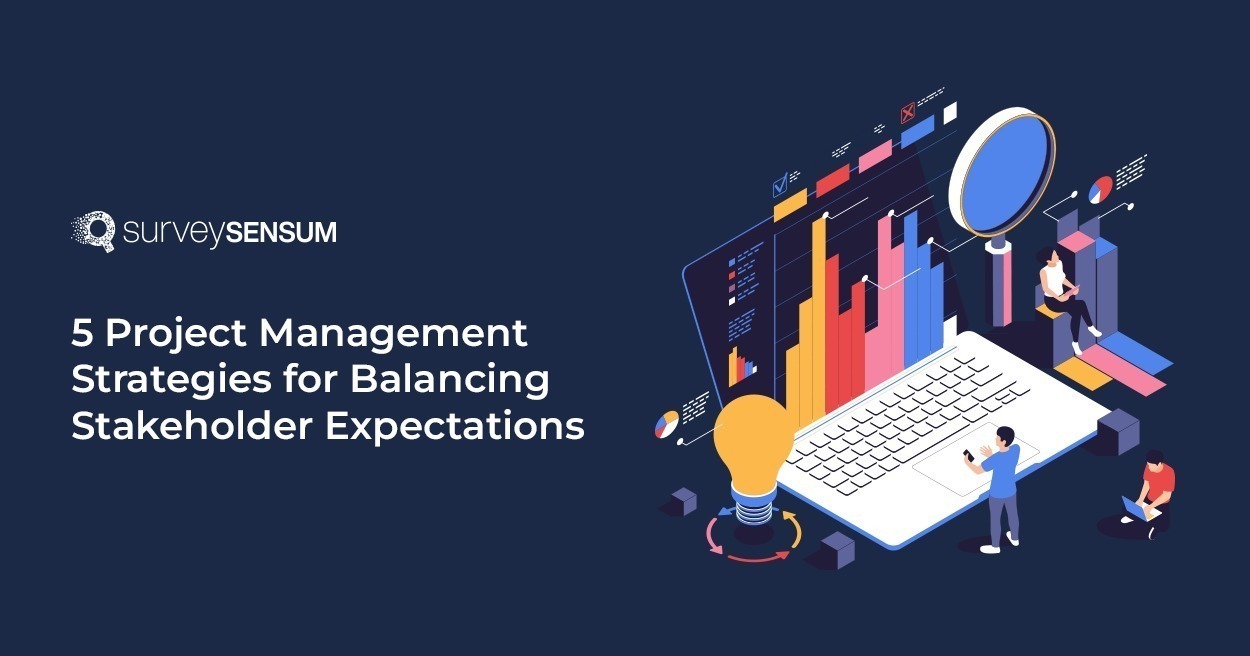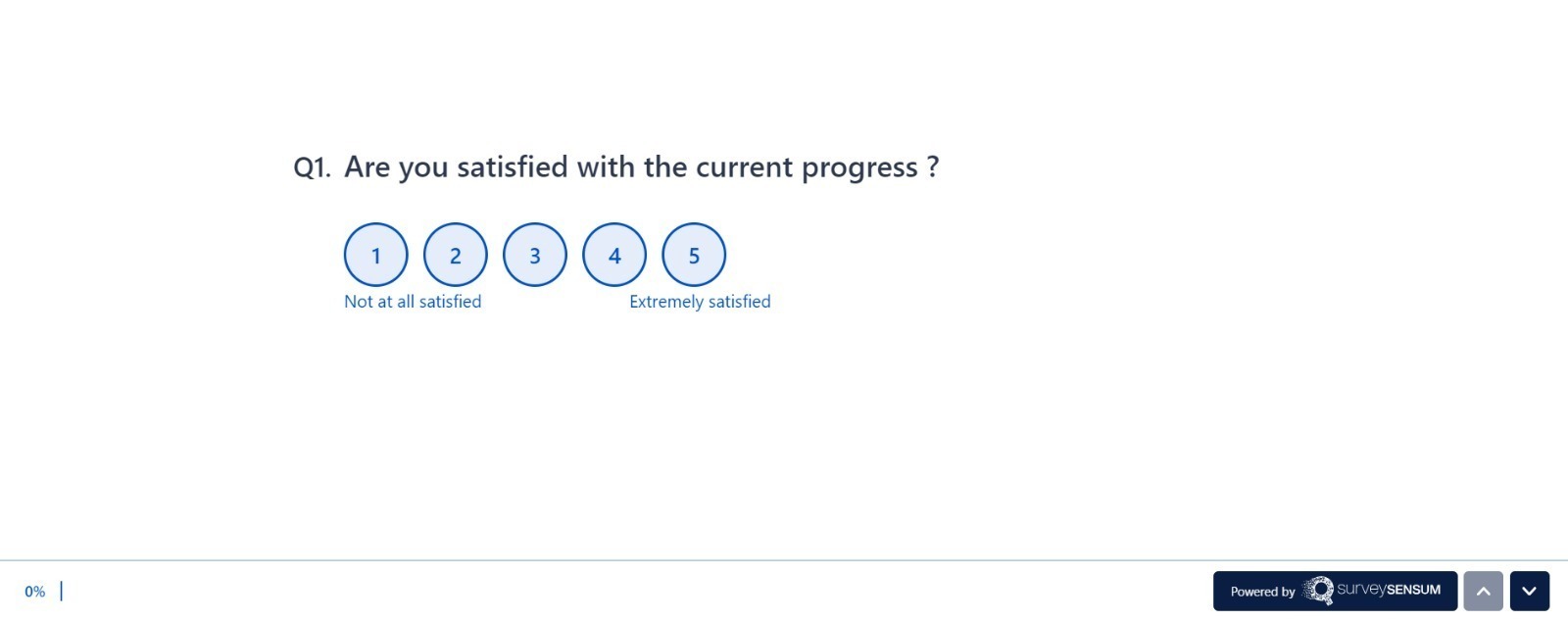9 Ways to Improve NPS Response Rates
Read More

Starting and completing a project is like conducting an orchestra. Success isn’t just about playing the right notes, but also about making sure that every person involved (stakeholders) is happy with how everything sounds.
To be a good project manager, you need to understand what everyone expects and make sure everyone is happy. It’s like an art. This is where the best project managers shine.
In this blog, we will look at why stakeholder expectations are so important and strategies to balance their expectations.
Stakeholder expectations encompass stakeholders’ wants, needs, and desires regarding a project’s outcomes. This includes everything from financial gains to customer satisfaction. These expectations serve as the compass guiding project managers through the complex maze of decision-making.
Successful management requires recognizing these diverse expectations and aligning them with the project’s activities and resource allocation. This way, stakeholders’ visions of success can be achieved.
During this dynamic process, project managers navigate complexities, ultimately steering the project toward outcomes that meet and potentially exceed stakeholder expectations.
However, as easy as it may seem to align project activities with stakeholder expectations, the reality is far from simple. Stakeholders often have diverse and sometimes conflicting expectations. This brings us to a critical aspect of project management—the need to balance stakeholder expectations. Let’s delve into why this balance is so crucial in the next section
Keeping stakeholders satisfied is crucial for achieving success. Unfulfilled expectations lead to frustration, which can slow down progress and create conflict. By balancing the various desires and needs of stakeholders, you can ensure that everyone is working towards the same objectives. This maximizes resources and promotes collaboration.
Think of it like a well-oiled machine. When each person understands their role in achieving the project goals, everything runs smoothly. By actively listening and making adjustments when necessary, you can build trust and keep the machine running smoothly, ultimately delivering long-term value for everyone involved.
Here are the different types of stakeholders and how they impact the project:
1. Primary Stakeholders: They have a direct and significant impact on the project. They are essential to its success, often holding financial, operational, or strategic influence.
Includes: Project team members, sponsors and customers
2. Secondary Stakeholders: They are indirectly affected by the project and may not have direct involvement in its execution. However, their influence can still significantly impact the project.
Includes: Suppliers, regulatory authorities, government agencies, and investors
3. Tertiary Stakeholders: These stakeholders have a more distant or indirect connection to the project, and their impact is usually less immediate. However, their interests can still be relevant.
Includes: Competitors, community members, industry experts, and advocacy groups
4. Quaternary Stakeholders: They typically have minimal direct impact on the project, but their interest lies in its overall success or failure. They may influence public perception or have a broader societal impact.
Includes: Media, public opinion influencers, and organizations focused on environmental or social issues.
Understanding these stakeholder classifications helps project managers tailor their work plan, communication, and engagement strategies to address the varying needs and expectations of each group. It also assists in prioritizing efforts to manage relationships and ensure the project’s success across a spectrum of interests.
Having understood the importance of balancing stakeholder expectations and the different types of stakeholders involved in a project, it’s clear that a one-size-fits-all approach won’t work. Each stakeholder group requires a unique approach to ensure their needs and expectations are met. So, how can we effectively balance these diverse expectations? Let’s take a look at 5 effective strategies for balancing stakeholder expectations in the next section.
Here are 5 strategies you must abide by to manage your project stakeholder’s expectations.
It’s essential to have a clear understanding of the parties involved in the project to ensure efficient management and engagement.
The first step is to conduct a comprehensive analysis to identify both internal and external stakeholders. This can include employees, management, and shareholders as internal stakeholders, while customers, suppliers, regulatory bodies, and the broader community can be considered external stakeholders.
Brainstorming with a cross-functional team can also help to identify all the key stakeholders, taking into account their different perspectives and potential outcomes that could impact a wide range of people.
Now that you’ve identified the stakeholders, it’s time to get to know them a bit better. One of the most important and primary external stakeholders is customers and it is important to understand their needs before planning the project scope. Dive into what customers are expecting and what problems they are trying to solve with the final product.
Then turn to your primary internal stakeholders—your project and management team. Whether it’s about making things better, making a mark, or reaching personal milestones—knowing their motivations and concerns will help you establish clear, measurable expectations and communicate them effectively.
This process of stakeholder analysis helps to align different interests and perspectives and lays the groundwork for a collaborative and goal-oriented project environment.
Understand Customer Expectations with Real-Time Feedback
Regular updates and transparency build trust and confidence among stakeholders, fostering a positive relationship between the project team and those who have a vested interest in its success.
The most efficient way to keep management in the loop throughout the project is to use project planning tools like monday.com or Celoxis for efficient stakeholder communication.
These platforms offer real-time updates and progress reports, providing management teams with a clear view of project status. Interactive features foster collaboration, allowing management to engage with the team and contribute to decision-making.
Overall, these tools streamline communication, ensuring management stays informed and actively involved throughout project execution, enhancing overall project success.
Proactive and transparent communication is a strategic approach to project management especially in agile project management. It involves collecting customer feedback after each sprint and foreseeing and addressing potential issues or changes needed in the final product.
On the other hand, timely sharing of project updates, milestones, and potential challenges keeps management informed and engaged. Transparency in decision-making processes and project complexities builds trust by providing a clear understanding of how and why certain choices are made.
This proactive communication style establishes an environment where stakeholders feel heard and valued, significantly reducing the likelihood of misunderstandings and conflicts, thereby contributing to smoother and more successful project execution.
After completing a project, evaluating whether the customers and management are content with the outcome is essential. This evaluation includes verifying if their expectations were met.
Examining what went smoothly and what could have been better is crucial for enhancing upcoming projects. You can do that by launching CSAT surveys like, ‘Are you satisfied with the current progress’ or ‘Is there anything you’d like us to improve?’

SurveySensum simplifies this evaluation process by providing insights that can guide future improvements. It is a valuable tool for ensuring continuous learning and adaptation, which results in ongoing and future project success.
As we wrap up our project journey, remember that meeting stakeholder expectations isn’t just a checkbox—it’s the heartbeat of success.
Keep the conversation flowing, understand what each stakeholder wants, and be open to change. It’s like a recipe—communication, adaptability, and learning from each project add the perfect flavors.
Think of stakeholders not just as observers but as collaborators in this creative process. So, let the projects tell their unique story, with stakeholders as the main characters.
